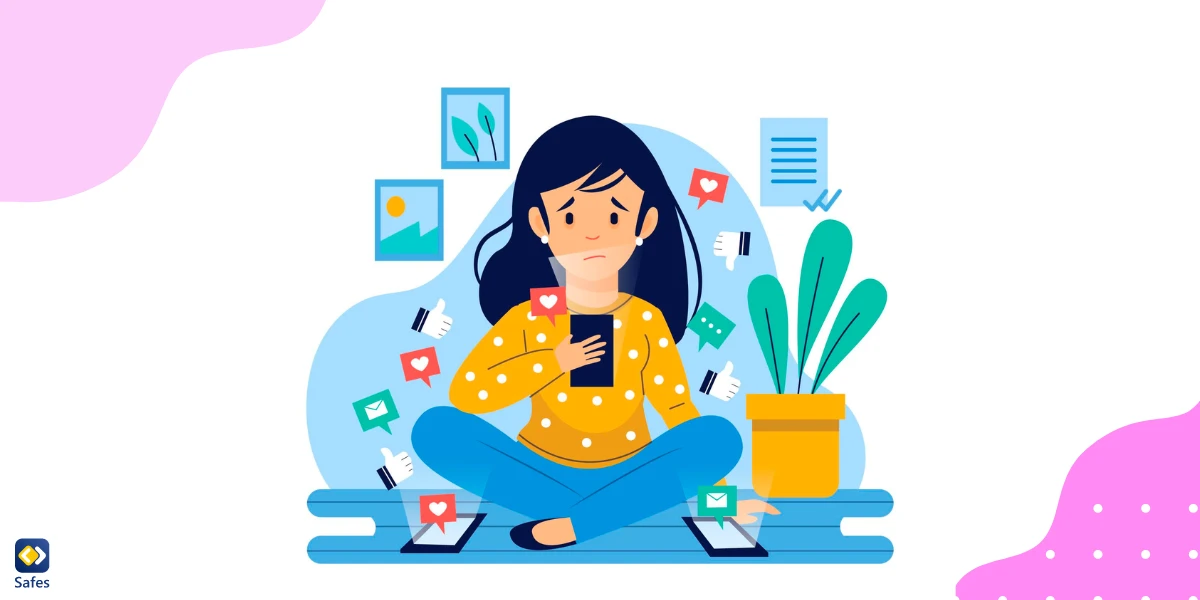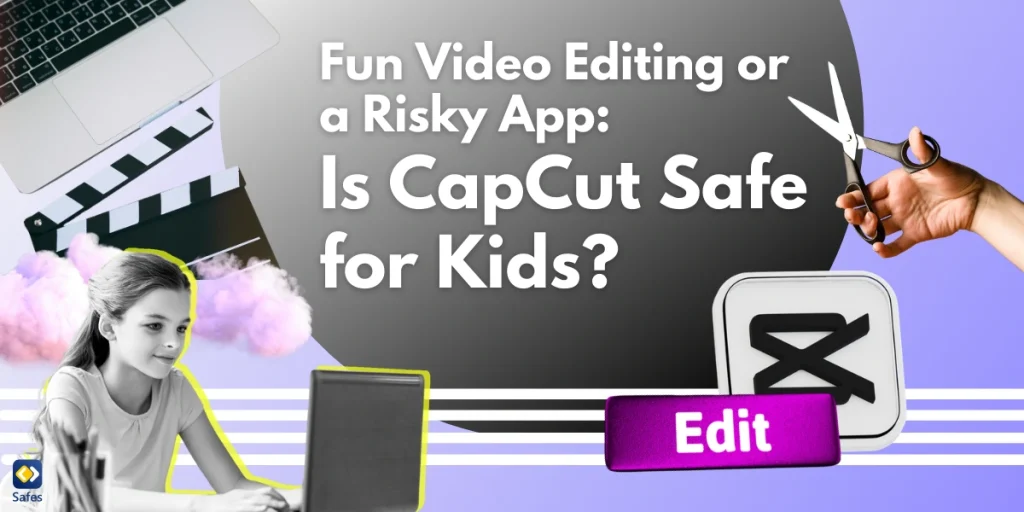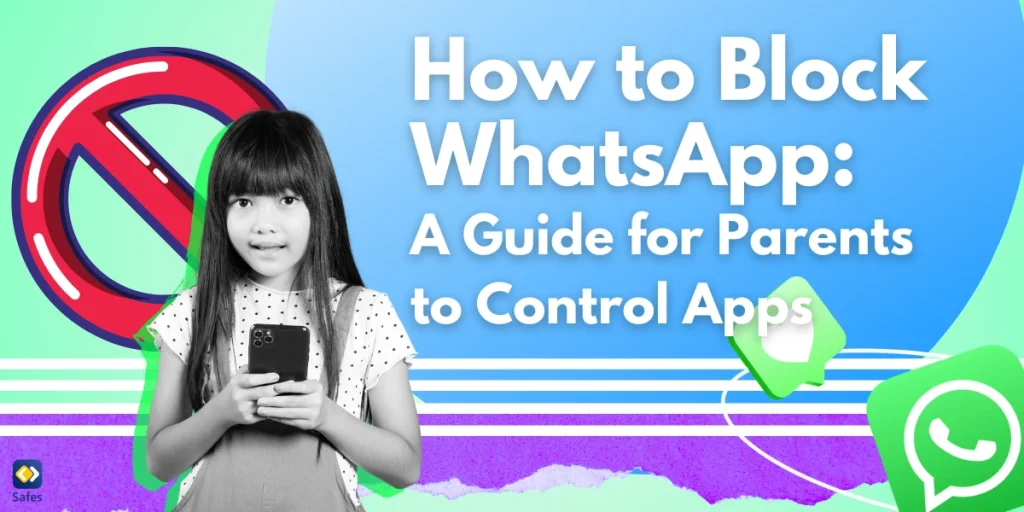Social media has become a part of our lives, showing us glimpses of friends, family, and even strangers, all at our fingertips. These platforms are cleverly designed to keep us hooked, and the secret sauce lies in their algorithms. Read on to learn how social media algorithms keep you addicted and how to protect your child against them.
Download and Start Your Free Trial of the Safes Parental Control App
Understanding Social Media Algorithms
Simply put, social media algorithms are a set of rules that help platforms decide what content to show you. They analyze your actions, such as likes, comments, shares, and even how long you spend looking at a post. Then, using this info, they curate a personalized feed just for you.
What’s the main goal of these algorithms? I think you guessed it. It’s to keep you engaged and active on the platform as long as and as often as possible. Social media platforms want you to stick around, interact with content, and, of course, see more ads. The more you engage, the more they learn about your preferences, which helps them fine-tune the content they show you. It’s like a never-ending cycle of fun and entertainment designed to keep you hooked. But does this party have a dark side? That’s what we’re looking for in this blog.
The Psychology of Addiction and Social Media Algorithms
Let’s see why we just can’t seem to put our phones down and why social media can be so addictive. It all comes down to psychology!
One concept that plays a big role in social media addiction is variable rewards, meaning that we never know what we’re going to get when we open an app or refresh a page. Will we see a new notification? A like on our post? The uncertainty of what we might find keeps us coming back for more.
Another psychological factor is FOMO or the fear of missing out. We see our friends and peers posting about their lives on social media and don’t want to miss out on anything. We want to be in the loop and feel connected to others.
Then there’s infinite scrolling. You know how on some apps, like Instagram, you can just keep scrolling and scrolling and never reach the end? That’s because the app is constantly loading new content, so you never run out of things to look at.
Finally, there’s the dopamine effect. Every time we see a new notification or get a like on our post, our brain releases dopamine, a feel-good chemical. This creates a cycle where we crave that dopamine hit and keep coming back to social media for more.
So, there you have it! Social media addiction isn’t just about a lack of self-control. It’s a complex combination of psychological factors that keep us hooked.

The Impact on Children and Teens
Social Media addiction is alarming for kids and adults alike, but children and teens are particularly vulnerable to social media addiction. Kids’ brains are still developing, and they’re more susceptible to peer influence. Social media addiction can have pretty negative effects on children’s mental health and physical health. It can lead to feeling anxious, depressed, and low self-esteem. Besides, breaking away from social media can be hard once you’re hooked.
Recognizing and Overcoming Social Media Addiction
Despite the harmful effects of social media addiction we just talked about, it’s important to remember that social media isn’t inherently bad and can be a valuable tool for communication and self-expression. Here are tips and strategies to help your child develop a healthier and more balanced relationship with social media:
Set boundaries: It’s essential to set limits on the amount of time your child spends on social media. Encourage them to take regular breaks and set specific times for social media use. You can also use parental control apps like Safes to ensure they’re not accessing inappropriate content (discussed a little later in this article).
Promote digital literacy: Teach your child to be critical of the content they see on social media. Encourage them to fact-check information and be aware of fake news and propaganda. This will help them develop a healthy skepticism and avoid falling prey to misinformation.
Foster offline activities: Encourage your kid to do other activities that don’t involve social media or screens, like sports, hobbies, or spending time with friends and family. A balance between screens and screenless activities helps them develop a well-rounded personality and avoid becoming too reliant on social media for social validation.

The Role of Parental Control Apps
There are great parental control apps out there that can help you manage your child’s social media usage. These apps offer features like screen time limits, content filtering, and monitoring tools to promote responsible digital habits. One excellent option is Safes, which is one of the most comprehensive and practical parental control apps on the market. With Safes, you can set screen time limits for specific apps or categories of apps, block inappropriate content, and monitor your child’s online activity. Plus, Safes offers real-time location tracking and geofencing, so you can make sure your child is safe when they’re out and about.
Safes is a multiplatform app that works on all phones, tablets, and computers powered by Android, iOS, Windows, and Mac. To learn more about how to put parental controls on different devices using Safes, follow the links below:
- Windows parental controls
- Macbook parental controls
- Parental controls on Android
- iPhone parental controls
To explore Safes’ full capabilities, sign up for a free trial today.
How Social Media Algorithms Keep You Addicted: Conclusion
Social media can be suitable platforms to connect us and allow us to express ourselves, but their algorithm makes them addictive. Social media addiction has harmful effects on our kids’ mental and physical health. But you can do a lot to help your child develop a healthy relationship with social media. Encourage your child to make a balance in their social media use by setting boundaries, promoting digital literacy, and fostering offline activities. Parental control apps like Safes can also help protect your child from the harms of social media.
Your Child’s Online Safety Starts Here
Every parent today needs a solution to manage screen time and keep their child safe online.
Without the right tools, digital risks and excessive screen time can impact children's well-being. Safes helps parents set healthy boundaries, monitor activity, and protect kids from online dangers—all with an easy-to-use app.
Take control of your child’s digital world. Learn more about Safes or download the app to start your free trial today!




